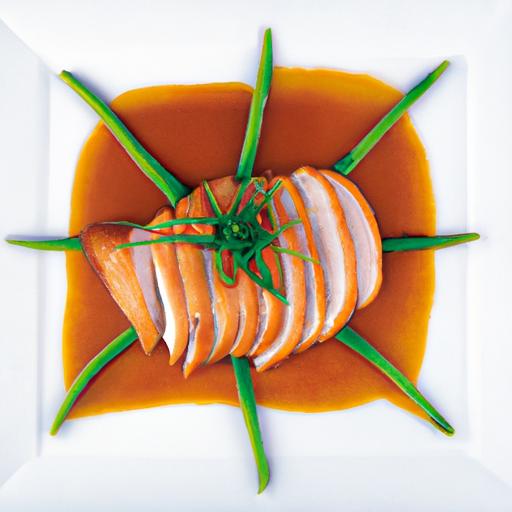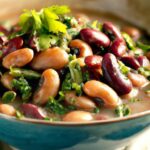In the vast world of cooking and baking, flavor is the invisible thread that weaves ordinary ingredients into extraordinary experiences. But have you ever wondered what gives that perfect vanilla cake its enchanting aroma, or what secret whisper of taste elevates your favorite cookies to a new realm? The answer lies in the magical power of extracts-tiny bottles packed with concentrated essence, ready to unlock a universe of flavor. This article peels back the curtain on these culinary wonders, revealing the science, history, and artistry behind extracts. Get ready to embark on a flavorful journey where taste buds dance and ordinary dishes transform into unforgettable masterpieces.
Understanding Extracts: How Extraction Methods Shape Flavor Profiles and Potency
Unlocking flavor is an art, especially when it comes to harnessing the true essence of natural extracts. From the source of vanilla beans to the final bottle, this process is a meticulous journey shaped by extraction methods that directly influence potency and intricate flavor notes. Whether using alcohol, glycerin, or oil-based extractions, each technique offers a unique concentration that brightens your culinary creations in extraordinary ways.
Prep and Cook Time
- Preparation: 5 minutes
- Extraction Time: Varies (1 to 6 weeks depending on method)
- Cooking/Baking Time Using Extracts: Depends on recipe
Yield
Approximately 1 cup of homemade extract (adjust based on source and container size)
Difficulty Level
Medium – Requires patience and attention to detail for optimal results
Ingredients
- 1 cup vodka or clear alcohol (40-50% ABV)
- 1 vanilla bean pod, split lengthwise
- 1 cup glycerin (alternative for alcohol-free extract)
- Fresh herbs or spices (e.g., cinnamon sticks, peppermint leaves, citrus peels)
- Glass jar with airtight lid
Instructions
- Prepare the source ingredient: If using vanilla beans, split the pod lengthwise to expose the seeds, releasing more flavor.
- Combine with solvent: Place the bean, herb, or spice into a clean glass jar. Pour your choice of solvent (vodka, glycerin, or oil) over it until fully submerged.
- Seal and shake: Close the jar tightly and shake vigorously to combine. Store in a cool, dark place.
- Infuse over time: Shake the jar daily to promote flavor extraction. The typical time frame ranges from 1 week for delicate notes to up to 6 weeks for stronger, more complex profiles.
- Strain and bottle: After the infusion period, strain out solids using a fine mesh sieve or cheesecloth. Transfer the extract into smaller bottles for easier use, labeling with date and flavor.
Tips for Success
- Use high-quality, fresh ingredients to ensure the richest taste.
- Alcohol extracts are most potent and long-lasting; glycerin extracts offer sweeter, milder flavors ideal for children or those avoiding alcohol.
- For oil-based extracts, use carrier oils like fractionated coconut oil, but be aware these are less shelf-stable and best for immediate use.
- If your extract tastes overly bitter after extraction, dilute it slightly with the solvent to balance intensity.
- Keep your extracts away from heat and direct sunlight to preserve freshness.
Serving Suggestions
Use extracts to elevate cakes, cookies, frostings, and marinades. A few drops of vanilla extract can turn a simple custard into an indulgent dessert. Infuse your morning coffee with a hint of peppermint extract for a refreshing twist, or add almond extract to your baked goods for nostalgic warmth. Garnish desserts with shards of vanilla bean or fresh herbs matching your extract flavors to visually and aromatically enhance your plate.

| Extract Type | Best Solvent | Flavor Intensity | Typical Shelf Life |
|---|---|---|---|
| Vanilla | Alcohol | High | Up to 2 years |
| Herbal (Peppermint, Basil) | Glycerin | Medium | 6 to 12 months |
| Citrus Peel | Oil | Light | 3 to 6 months |
For deeper insights into the science behind food flavors and culinary techniques, check out our comprehensive guide to flavor science. To explore the fascinating chemistry of extraction processes, visit National Science Foundation’s Extraction Chemistry Resources.
Q&A
Q&A: Unlocking Flavor – The Magic Behind Extracts Explained
Q1: What exactly are extracts, and why are they considered magical in the kitchen?
A1: Extracts are concentrated essences drawn from natural ingredients like vanilla beans, almonds, or citrus peels. They’re magical because a few drops can coax out intense flavors, transforming ordinary dishes into unforgettable culinary experiences. Think of extracts as tiny flavor wizards, amplifying taste with minimal effort.
Q2: How are these flavor-packed extracts made?
A2: The magic begins with a process called extraction, where the key flavor compounds are pulled out using solvents such as alcohol, glycerin, or even water. For example, vanilla extract is created by soaking vanilla beans in alcohol, which lovingly dissolves and captures their rich aroma and taste. This concentrated potion preserves the essence of the ingredient in its purest form.
Q3: Why do recipes call for just a few drops of extract?
A3: Extracts are intensely flavorful, so a little goes a long way. Adding too much can overpower your dish, much like an overly enthusiastic wizard casting a spell. The goal is balance-just the right sprinkle of extract to enhance without overwhelming.
Q4: Can extracts be used beyond baking?
A4: Absolutely! Extracts are versatile flavor enhancers. Beyond cakes and cookies, try adding almond extract to your morning oatmeal, a dash of peppermint extract in a cocktail, or a splash of lemon extract in salad dressings. They’re like secret flavor passports to explore new taste territories.
Q5: What’s the difference between natural and artificial extracts?
A5: Natural extracts come directly from the source-real vanilla beans, fresh almonds-capturing authentic flavor molecules. Artificial extracts, on the other hand, are synthesized in labs to mimic these flavors. While both serve their purpose, purists often prefer natural extracts for their depth and complexity.
Q6: How should extracts be stored to maintain their magic?
A6: Keep extracts in a cool, dark place, away from heat and sunlight, ideally in tightly sealed glass bottles. Like bottled spells, exposure to light and warmth can weaken their potency over time, so proper storage preserves their enchanting flavor powers.
Q7: Can I make my own extracts at home?
A7: Yes! Crafting your own extracts is a delightful DIY project. Simply soak your chosen ingredient-vanilla beans, citrus zest, mint leaves-in a high-proof alcohol and let nature work its magic over several weeks. The result is a personalized potion bursting with your favorite flavors.
Q8: Why are extracts considered essential tools for cooks and bakers?
A8: Extracts are the secret ingredients that bring depth, aroma, and complexity to recipes without adding bulk or moisture. They’re like tiny capsules of flavor brilliance, giving chefs and home cooks alike a powerful means to elevate their dishes instantly.
Unlocking the power of extracts opens a whole new world of flavor possibilities. With a little knowledge and a drop or two, you can transform simple ingredients into extraordinary culinary creations-truly the magic behind the marvels of taste.
Concluding Remarks
As we’ve journeyed through the fascinating world of extracts, it’s clear that these liquid treasures hold far more than just flavor-they carry the essence of nature’s most beloved ingredients, concentrated and ready to transform the ordinary into the extraordinary. Whether it’s the warm embrace of vanilla, the bright zing of citrus, or the deep allure of spice, extracts unlock a symphony of taste with just a few drops. So next time you reach for a bottle on your shelf, remember the magic it contains and the centuries of craft distilled into every drop. Unlocking flavor isn’t just science-it’s an art, inviting you to savor the extraordinary in every bite.


